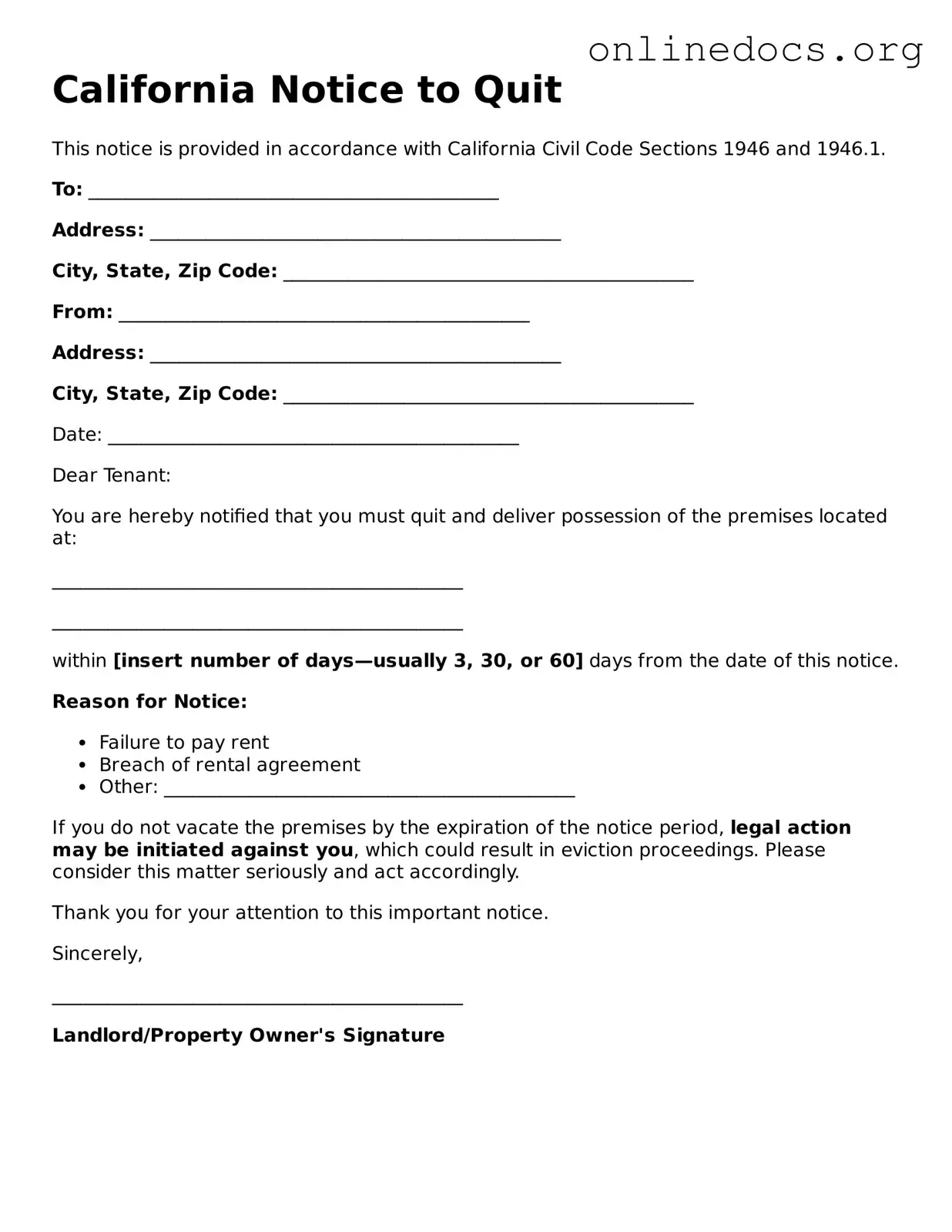Filling out the California Notice to Quit form can be a straightforward process, but many people make common mistakes that can complicate matters. One frequent error is failing to include the correct date. The date is crucial as it indicates when the notice was served. Without it, the notice may not be considered valid.
Another mistake involves not providing the tenant's full name. A complete name is essential to ensure that the notice is directed to the right person. Omitting middle names or initials can lead to confusion and potential disputes.
Some individuals forget to specify the reason for the notice. California law requires that the reason be clearly stated, whether it is for non-payment of rent or another violation of the lease agreement. Leaving this section blank can render the notice ineffective.
Many people also overlook the requirement to include the address of the rental property. This address must be accurate and complete. If the address is incorrect, the tenant may claim they did not receive the notice.
Another common error is not signing the notice. A signature is necessary to validate the document. Without a signature, the notice may be considered incomplete and unenforceable.
Some individuals fail to provide the correct method of delivery. California law outlines specific ways to serve a Notice to Quit, such as personal delivery or posting. Not following these methods can lead to challenges in court.
In addition, people sometimes forget to keep a copy of the notice for their records. Keeping a copy is important for future reference, especially if the situation escalates to legal proceedings.
Another mistake is using outdated or incorrect forms. It is vital to ensure that the form being used is the most current version available. Using an outdated form can lead to legal issues down the line.
Some individuals do not allow sufficient time for the tenant to respond. California law specifies the amount of time a tenant has to vacate the property, depending on the reason for the notice. Not adhering to these timelines can undermine the notice's effectiveness.
Lastly, failing to consult with a legal professional can be a significant oversight. Seeking advice can help ensure that all aspects of the Notice to Quit are handled correctly, reducing the risk of errors that could affect the eviction process.
